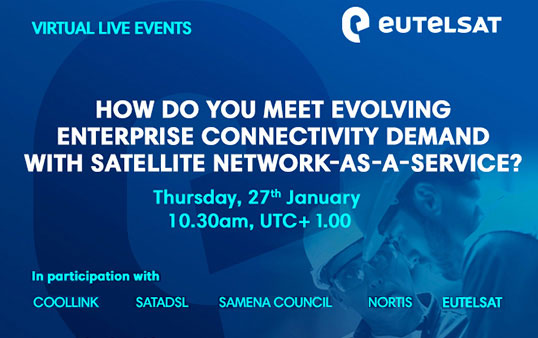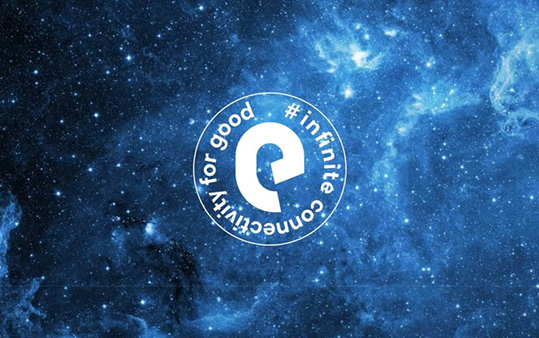Introducing a new way to broadcast that brings the best of both worlds
We’re all going mobile with our viewing!
We demand quality video content not just at home but while we’re out and about, catching the train, or on our way to our next meeting - but internet connectivity is still playing catch-up. Today, over 60% of smartphone users watch video content on their mobile devices, but suitable fibre penetration is far from reaching all screens – even in Europe, 46% of households are forecast to have insufficient infrastructure to watch video services in 2026[1].
With even developed countries lacking the infrastructure to deliver dedicated connectivity to all their citizens, it seems like unrestricted mobile viewing may be a distant dream - until today.
Introducing DVB-NIP - a new era of broadcasting
Recognising the unique challenge for service providers faced with local internet limitations when trying to deliver high-quality OTT content, DVB-NIP is redefining the future of video broadcasting. DVB-NIP is the new standard which allows the distribution of IP native mABR content (the format used by OTT and targeting handheld devices and SmartTVs) through broadcast channels, like satellite. Combining the flexibility of OTT and second screens, with the reliability, reach and quality ensured by broadcast channels, DVB-NIP is set to change our expectations for audiovisual content delivery.
At AfricaCom 2023, we’ve teamed up with industry players including Amazon Web Services (AWS), Broadpeak, DVB, EasyBroadcast, EKT, Enensys, Inverto, Quadrille and ST Engineering iDirect, to showcase the DVB-NIP solution, integrating video distribution with production and distribution workflows deployed over the AWS cloud.
Let’s explore what DVB-NIP is and why it's such a game changer for broadcasting and audiovisual distribution.
How does DVB-NIP work?
At its core, DVB-NIP is like a translator. It helps us take modern video formats, like the ones you might stream on your smartphone or computer, and deliver them using traditional satellite broadcasting methods. It facilitates the delivery of native IP video content, like Adaptive Media Streaming, over conventional DTH channels.
In essence, DVB-NIP is a technology that helps modern online videos become accessible through traditional satellite TV systems, providing viewers with more content options and broadcasters with a new, reliable distribution method.
But it's not just about the technology. It's about the tangible benefits it brings to broadcasters, OTT service providers, and everyday viewers:
DTH 2.0: No more spiralling CDN costs. With DVB-NIP, you gain superior reliability and can bypass internet congestion during live events.
Satellite CDN and 5G: Satellite integration, to feed CDNs and edge CDNs, including 5G networks, helps cut down peering costs and enhances the delivery of highly sought-after content.
Ultra HD without infrastructure concerns: DVB-NIP channels bypass terrestrial network bottlenecks, not only saving on CDN costs, but also achieving the highest throughputs required by high-quality content like Ultra HD.
Hospitality, entertainment and remote viewing: Imagine hotels and venues receiving both OTT and DTH content without relying on the internet. Picture having the ability to seamlessly access video content on demand, without delay or a compromise on quality wherever you are. That's the future we envision.
See it in action at AfricaCom
Uninterrupted video content available anytime, anywhere without a loss of quality may sound too good to be true - but if seeing is believing, you’ll want to attend this year’s event. Here’s a couple of the use cases we’ll be demonstrating:
Next-gen. DTH services
Why settle for one when you can use the best of both worlds with DVB-NIP? We’ll demonstrate how broadcasters can combine the flexibility of OTT and second screens with the reliability, reach and quality ensured by broadcast channels for a new breed of TV shows, sports, news, videos and entertainment. By including OTT content with linear TV delivery, broadcasters can differentiate their offer in a highly competitive market.
Eutelsat, Broadpeak, EKT and Amazon Web Services will be hosting a live demonstration of this game-changing technology. Through specific, real-time examples, we’ll show how satellite technology and the cloud can work together to make video and TV better.
5G network feeding
5G networks with latest 3GPP releases have all the capacities to distribute content efficiently using unicast, multicast or broadcast delivery methods.
It specifically caters to distribute content to wide audiences, like live television, enabling network operators and content providers to unlock new opportunities for innovative services.
The deployment of 5G networks will require the implementation of very dense, low-power transmitters. Satellite distribution technologies, coupled with the new DVB-NIP standard, are extremely well suited to deliver live media content to these networks.
Eutelsat and Enensys will be hosting a live demo of satellite contribution to 5G networks at AfricaCom using the DVB-NIP standard. Live content from several TV channels will be collected at the Eutelsat Teleport, compressed in MPEG4 and packaged in DASH. The packaged content will then be encapsulated by the Enensys MediaCast server and transmitted on Eutelsat’s satellite.
The satellite signal will be received in Cape Town and the Ebox from Enensys embeds the satellite reception with all the core and RAN functions of a 5G mobile network. Content is streamed to 5G mobile devices registered on this mobile network. The streaming service is running at the edge of the mobile network.
This demonstration represents a first step in the integration of satellite and 5G networks for the distribution of media content.
We look forward to welcoming you
Step into the new world of broadcasting at AfricaCom 2023! Our demos will bring to light the powerful synergy between satellite and cloud. Incoming video contributions, whether direct from the cloud or via satellite IP links, are efficiently managed. And while traditional DTH distribution remains a viable option, DVB-NIP is set to revolutionise how we consume content.
At AfricaCom 2023, we’ll be showing how DVB-NIP is the embodiment of blending satellite robustness with cloud flexibility. A future where high-quality content, be it Ultra HD or standard broadcasting, reaches viewers without the limitations of terrestrial networks is just around the corner. At Eutelsat, we believe that this is more than innovation; it's a broadcasting revolution, and we're thrilled to lead the charge.
To find out more, contact us here to schedule a demo, or see our brochure for more information.
[1] Idate FTTH Forecast for Europe / Market forecast 2021-2026 / FTTH Virtual Conference 2021



